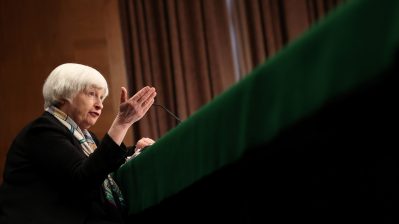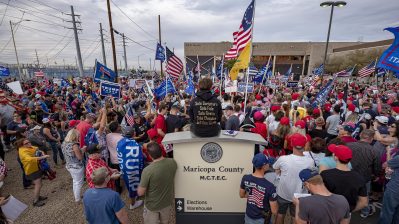NYC walk zones give business a leg up
TEXT OF STORY
KAI RYSSDAL: Here with my annual and, yes, very picky, complaint about living on the West Coast: The television schedules really stink. Football games on Sunday? They start at 10 in the morning. Just not right.
And on New Year’s Eve, the ball in Times Square drops at what is for us 9 o’clock. Leaves us in limbo for three solid hours. When midnight, east coast time, does finally chime in Times Square this year, the ball’s going to be looking over a somewhat reconfigured streetscape. Earlier this year New York City turned a chunk of Broadway into a pedestrian “mall.”
We asked WNYC’s Andrea Bernstein to find out whether the increase in foot traffic has helped or hurt local businesses.
Andrea Bernstein: This isn’t actually a square — it’s a crossroads where Broadway cuts diagonally through Manhattan’s street grid at 42nd Street. That’s always created congestion.
But when New York City Mayor Michael Bloomberg announced his pilot project to turn over a chunk of the Great White Way to pedestrians last spring, it was seen as another of his crazy schemes — meshugenah. Right up there with banning smoking in bars and transfats from restaurants.
Mary O’Hara, a nurse from Brooklyn, didn’t much care for it.
Mary O’Hara: The street is meant for cars not for people. The city’s busy, there’s a lot of traffic. I know Mayor Bloomberg wants to see us all riding bicycles, but that’s not reality.
The city transportation commissioner says traffic has actually improved in the area. But Caroline Hirsch, owner of Caroline’s on Broadway, the stand-up comedy club, says there’s been a fall-off in customers. And not just from the poor economy.
Caroline Hirsch: I had a very strong first six months of the year, which is the hardest time to have a strong six months, OK? So it’s not that, it’s almost like clockwork when that happened. I think it’s driven away a lot of the weekend traffic that comes here.
But, turns out a lot of retailers find themselves liking the pedestrian plaza. Even though it’s always looked pretty tacky — just a big red painted street with temporary tables and chairs.
Hassan George: It’s good for us.
Hassan George works at 47th Street Camera and Computers.
Bernstein: Does that surprise you?
George: Yes.
Bernstein: Why?
George: Because people always busy around here, so people don’t look even at the stores, sidewalks, whatever. Now they have the time to look at the stores, whatever, look around.
Just a few stores down, Kwabena Blackshear, a waiter at the TGIF restaurant says he’s seen an uptick in foot traffic and tips.
Kwabena Blackshear: You get more tourists around in the plaza, sitting down, hanging out, they get a view of the Square. It’s better than just walking past and not being able to stand by and really absorb what Times Square has to offer.
Tim Tompkins is the President of the Times Square Alliance, a business group. He says before the closure people would come for Broadway shows but were deeply unhappy with the congestion.
Tim Tompkins: If people are coming to your store, kind of in spite of the environment around it, then that’s a problem.
He says it used to be locals and tourists alike, were putting their heads down and just trying to get through.
Tompkins: In the long term, it was something that was not good for the office buildings, because the people who worked here in this neighborhood hated it. Ninety-six percent said they had walked at one point or another in the bed of the street, because it was so crowded just getting around Times Square.
Tompkins is doing a comprehensive survey of the effect of the street closure, but he says it’s trending positive. He’s seeing more visits to his information booth and more ATM withdrawals in the heart of Times Square.
That’s consistent with what some urban planners, like Danish architect Camilla van Deurs, say they’ve seen around the globe. She says studies show creating pedestrian areas increase revenues for retailers.
Camilla van Deurs: What happened earlier was people may have come in a taxi gone to a Broadway show, and then they jump right into the cab and disappear again. And you don’t have that spin-off for the whole neighborhood of these giant volumes of people coming through there.
Not everyone sees it that way. But Tim Tompkins says driving is no longer driving the discussion.
Tompkins: The debate became about these chairs and whether people liked or didn’t like the chairs, which to me really was this debate about what are our expectations for this public space?
Mayor Bloomberg decides whether to make the plazas permanent early next year.
In New York, I’m Andrea Bernstein for Marketplace.
There’s a lot happening in the world. Through it all, Marketplace is here for you.
You rely on Marketplace to break down the world’s events and tell you how it affects you in a fact-based, approachable way. We rely on your financial support to keep making that possible.
Your donation today powers the independent journalism that you rely on. For just $5/month, you can help sustain Marketplace so we can keep reporting on the things that matter to you.


















